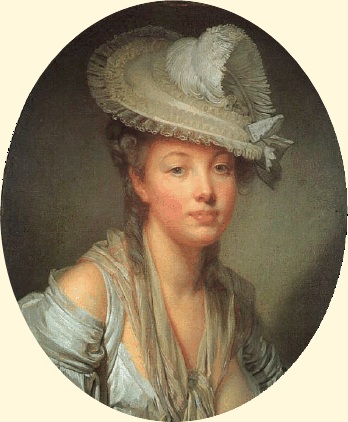After reading the variety of “Little Red Riding Hood” tales, I was surprised by the inconsistency and varying interpretations. From violence to happy endings, it is obvious that the story of the young cloaked girl has changed over the ages depending on the time period, culture, and audience. I also noticed that none of the stories I read in Folk & Fairy Tales were exactly the same as the one I remember reading when I was a young child. While the version I was first introduced to contained similar elements, it also contained less details producing a more straightforward tale and a happy ending to please a child. Therefore, since I was used to a story that lacked violence and a gruesome ending, I was shocked to read versions of the fairytale that included adult-related themes.
In the first story, “The Story of Grandmother” by Paul Delarue, a young girl is tricked by a bzou, instead of a wolf. Like many of the other “Little Red Riding Hood” stories, the bzou arrives to the grandmother’s house before the young girl and kills the elderly woman. However Delarue’s version quickly becomes different from the others when the bzou puts some of the grandmother’s flesh and bottled blood in a pantry. Later in the story the young girl is tricked by the bzou and eats and drinks the flesh and blood. While the girl is eating, a cat in the pantry says, “A slut is she who eats the flesh and drinks the blood of her grandmother” (32). I was surprised to see such sexual profanity in a fairytale. All of the fairytales that I read when I was younger were always innocent and fanciful. I also found it odd when the girl undressed at the request of the bzou. Perhaps I find it strange because I do not understand the context of the characters’ actions due to the different time period and culture in which it was written. Nonetheless, I still find it difficult to believe that “The Story of Grandmother” to be a story that was popular among young children. Instead, I interpret the tale as being told to adults as a way of expressing to the community the importance of a woman’s sexual innocence.
Charles Perrault’s “Little Red Riding Hood” is another version of the fairytale that contained elements that I was not used to seeing in the genre. Perrault’s story contains simple, yet vivid descriptions of the wolf eating Little Red Riding Hood and her grandmother. Also, unlike Delarue’s tale where Little Red Riding Hood escapes, Perrault’s version lacks a happy ending. The fairytale simply ends with Little Red Riding Hood’s death. While Perrault states that the moral of the story is directed toward children, I still find it hard to imagine that children enjoyed listening to such a story. I know when I was young, I would have been frightened if I were told Perrault’s tale.
Overall, reading different versions of “Little Red Riding Hood” opened my eyes to the meaning of fairytales. Delarue’s and Perrault’s stories are definitely not similar to the cheerful one’s that I was used to reading when I was little. However, perhaps long ago fairytales contained scary and startling elements to purposely create fear among children. Maybe adults believed that in order to have a child behave, it was appropriate to frighten them with the tales that illustrated examples of extreme consequences for certain actions, such as talking to strangers. Nevertheless, I am fascinated by the varying circumstances in the different accounts of “Little Red Riding Hood” and look forward to learning more about how fairytales were used in the past.
Here's the trailer for the new movie "Red Riding Hood" coming to theaters this month:
I wonder if the movie will contain any of the more adult-themed elements found in some of the different versions of the fairytale such as those found in Delarue's account.

